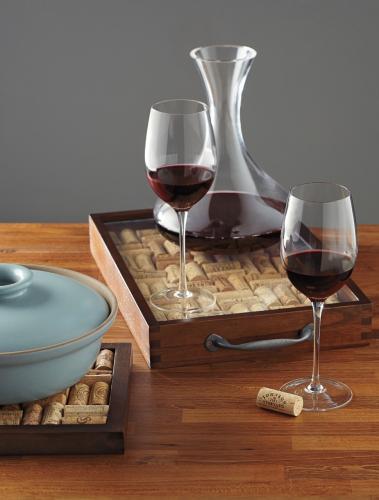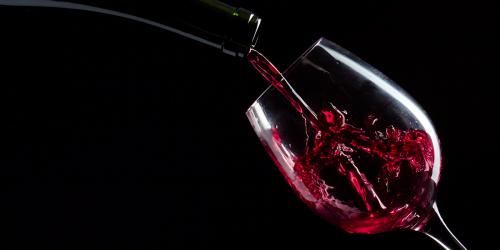When, and Why, Should You Decant Wines?

Have you ever seen someone pour a bottle of wine into a special glass carafe before serving it? Decanting wine is a process of separating the wine from the sediment that can accumulate in the bottle over time. The process of decanting wine can be traced back to the 16th century, but it wasn’t until the 18th century that it became widely used.
According to the statistics, one of the primary questions asked by online wine store USA personnel is why and how long should we decant the wine? While the answer is straightforward, there are several points to consider when selecting wines to decant and determining when it is appropriate to do so.
Why Decant Wines?
There are two reasons to decant a wine: to aerate and to clear the wine from its sediment, which could be seen in old wines. This sediment may usually occur after five years of aging unless the wine is limited or not filtered. After ten years of aging and especially vintage ports have the most sediment. Even if that doesn't affect the wine's taste dramatically, it may add to astringency and make a hazy color, but many wine customers like to see a clear color. Keeping wine upright will let the sediment sink, but this can't happen in restaurants; they don't know which wine to sell a day before.
The other reason mentioned above to decant wine is the necessity for aeration, making it the right wine with the right amount and right wine decanter would dramatically increase the taste of the wine.
Many young wines could be closed or fogy in the nose. Especially for the wines produced in a reductive way; as much as possible less oxygen contact during winemaking. When the wine meets with the oxygen, it opens up the aromas, which are faded. Aeration enhances the aroma profile; it also softens the tannins and decreases the unpleasure rotten aromas and sulfur compounds.
How Long Should You Decant Your Wines?
The decanter does to expand the surface area of wine to provide for more oxygen contact—this aeration time maybe 15 mins up to 1 day. The required time of aeration can be found by repeatedly tasting over time during aeration until it comes to life; typically, 15-30 mins is the safe side.
The critical point is how long to decant, because especially light wines and contrary to general belief, aged wines except for old vintage Ports and Madeiras, could easily lose their aroma profile. Buying older wine is very popular in online wine stores than younger wine, and you should be careful about decanting it to enjoy it properly. There is a hot debate among some wine experts people; some of them divide aged wines into two categories decanting, vigorous old wines like a Barolo that need to be decanted, and delicate wines like a Pinot Noir not in any way.
Which Wines Do You Need to Decant?
The wines that need most to kick their aromas by an expedited oxygen contact are full-bodied no matter the color, bold, young, and tannic ones –such as a Barolo or Napa Cabernet Sauvignon. Even aeration decreases the bubbles of sparkling wines; it is only visual and doesn't decrease aeration's benefits. Some experts claim that every wine deserves decanting to give it a chance to show its potential. White wine, light young wine, and long-aged wine, due to their low primary aroma profile, aeration should be minimal, and if aerated more than enough, they become dull and smell like vinegar due to oxidation.
Even after you asked to an expert at the wine store or an online sommelier, and still don't know whether the wine you need to be decanted or not, taste it and consider double decanting if the initial taste after the first one is not promising. If the aroma and flavor are faded and have a bitter, astringent taste with some rotten or burned match odor; consider aerating it and taking the wine to another lovely step, believe that to miss this experience would be a big loss. If you're still unsure, remember that you don't have to aerate for that long. Luckily, some order wine delivery services started to send an informative note about decanting with the wines you buy online.
How to Properly Decant Your Wines?
Decanting basically means pouring wine from a bottle to another vessel; this could be a big decanter or even another glass that can take over this role.
So, decanting is the only and also the coolest ceremony here to clear the sediment. The sommeliers tilt the wine and pour it into a decanter, and for wines with high sediment, they need to light a candle under the red wine bottle to see the sediment and stop pouring. There are simple products that you can find in order for wine delivery services that are produced to do this ceremony.
Decanting wine could be accelerated by swirling the decanter or pouring back and forth again. Or there are simple aerators that pressurize the wine with oxygen, knowing aeration happens in a concise time.
We need to remember that swirling the glass is the way of aerating and the safe side compared to big decanters. This is why light wines like a Pinot Grio shouldn't be swirled in the glass so much to keep their fresh aromas. That's why the first thing we do when we buy wine online, especially light wines are to sort them according to the most recently produced ones.
As a wine lover, if you'd like to learn more about decanting wine or other useful topics before you buy wine online, visit our blog page.




Comments